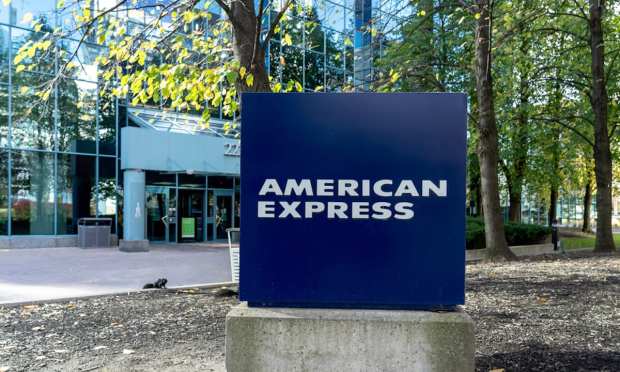American Express Non-T&E Spend Recovers Into Q4

American Express reported results that showed the impact of reserve releases of credit loss provisions as the macro environment improved amid the pandemic. Delinquency rates are at some of the lowest levels seen in the past few years, according to the latest results — but revenue metrics show there’s still a ways to go as we transition fully beyond the pandemic’s impact, particularly in travel-related spending.
In terms of headline numbers, earnings were $1.76 a share, down from the $2.03 a share seen a year ago, but better than the $1.31 the Street had expected. Revenues stood at $9.35 billion, slightly above the $9.34 billion that had been pegged as consensus.
As has been seen with other financial services firms, the company also released at least some reserve for credit losses during the quarter. American Express said that in the latest quarter, it released $111 million, where in the third quarter, it took a provision for anticipated losses of $665 million. CEO Stephen Squeri said in remarks accompanying the release that non-travel and entertainment spending had surpassed levels seen before the pandemic for the second consecutive quarter.
Drilling down into supplemental materials released by the company in tandem with the earnings announcement, American Express said that its proprietary billed business – which includes activity on its cards, along with cash advances – was down 16 percent in the quarter, as measured year over year. Within that metric, travel and entertainment spend was off 65 percent, while non-travel and entertainment spend was in fact 4 percent higher over the same timeframe. Proprietary billed business is 86 percent of the company’s worldwide total; consumer spending is 54 percent of its proprietary business, while small to mid-sized businesses make up 39 percent.
Travel-Related Spend Suffers
The company also shed light on spending trends tied to travel and entertainment, illustrating just how hard-hit these verticals were. For example, year over year, restaurant spending was down 39 percent, lodging was off 68 percent, airlines were down 85 percent and cruises were off by 98 percent.
During the conference call with analysts to discuss the latest results, management said that in travel-related spending, there is “pent up demand” that could see spend rebound to 70 percent to 80 percent of previous levels through the next several months. Corporate travel demand is likely not going to rebound, however, management stated on the call.
The company said that total ending loans in the period were $76.1 billion, down 17 percent year over year, though that represented an uptick above the $73.1 billion measured in the third quarter.
Credit metrics improved in the period. American Express said net write-off rates tied to its cardmember loans were 1.9 percent in the latest period, compared with 2.5 percent in the third quarter and 2.8 percent in the second quarter. Write-offs of cardmember receivables were 1 percent in the most recent quarter. Credit reserves, according to management, totaled $5.8 billion at the end of the most recent quarter, representing a conservative economic outlook.
The company said in other financial presentation materials that proprietary cards in force were down 2 percent year over year to 112 million. Average proprietary cardmember spending, as reported, was $4,549 (in billions, U.S. dollars), a 13 percent decline year over year. CFO Jeffrey Campbell said on the call that 2021 will be “about rebuilding new card acquisition numbers.”
According to management, other priorities looking ahead will include investments in the American Express network, launching Kabbage in the small business checking vertical, and enhancing digital capabilities.
